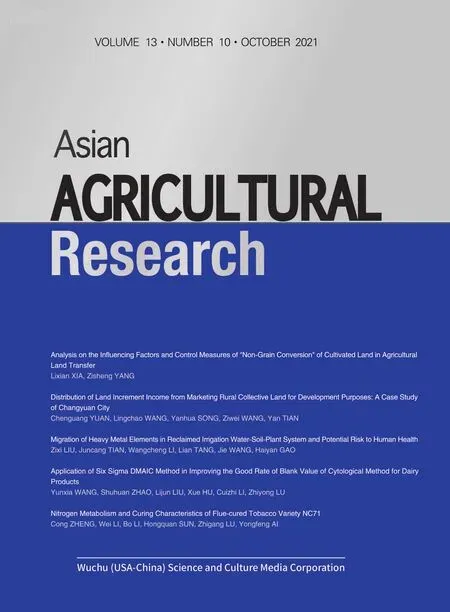Migration of Heavy Metal Elements in Reclaimed Irrigation Water-Soil-Plant System and Potential Risk to Human Health
2021-12-31ZixiLIUJuncangTIANWangchengLILianTANGJieWANGHaiyanGAO
Zixi LIU, Juncang TIAN,2,3, Wangcheng LI*, Lian TANG,2,3, Jie WANG, Haiyan GAO
1. School of Civil Engineering and Hydraulic Engineering, Ningxia University, Yinchuan 750021, China; 2. Engineering Technique Research Center for Water Saving Irrigation and Water Resources, Yinchuan 750021, China; 3. Engineering Research Center of the Ministry of Education for the Modern Utilization of Modern Agricultural Water Resources in Arid Areas, Yinchuan 750021, China
Abstract [Objectives] To study the impact of heavy metal pollution of soil and plants during the process of reclaimed water for irrigation of green land in arid areas and the potential health risks to humans during use. [Methods] Taking Zhongwei City in Ningxia, a typical arid area, as the research area, the irrigation water, soil and green grass in the reclaimed water irrigation region and the original green water irrigation region were sampled, the heavy elements Hg, As, Zn, Pb, Cd, Cr were detected, and the Nemerow method, biological absorption coefficient, and health risk assessment were employed to evaluate the degree of soil pollution, plant absorption capacity, and human health risks. [Results] Compared with the original green water, the Hg, Cd, and Cr pollution of the reclaimed water irrigated green land was higher, the As, Zn, Pb pollution was lower, and the content of Hg and Cd was higher than the environmental background values of soil in Ningxia; the Cr content exceeded the risk intervention values of the first type of land in the Soil Environmental Quality—Risk Control Standard for Soil Contamination of Development Land (GB 36600-2018). Compared with the original green water irrigation region, it is found that the reclaimed water irrigation reduced the heavy metal pollution of the soil to a certain extent. The heavy metal content of tall fescue grass (Festuca arundinacea) in the reclaimed water irrigation region was Zn, Cr, Pb, As, Cd, and Hg from high to low; the order of the biological absorption coefficient was Cd>As>Zn>Pb>Hg>Cr; irrigation water exerted a certain effect on the content of heavy metals in plants and the biological absorption coefficient through the soil. Using the health risk assessment method recommended by Environmental Protection Agency of the United States of America (USEPA), it was found that the reclaimed water has the highest risk through the inhalation route, and the occupational population has a higher risk of skin contact with soil and plants. [Conclusions] This study is intended to provide data support and theoretical basis for the environmental safety risk research of the application of reclaimed water in arid areas to urban greening.
Key words Reclaimed water irrigation, Water-soil-plant system, Migration of heavy metal elements, Health risk assessment
1 Introduction
As a supplementary water source, reclaimed water through proper treatmentcan alleviate the pressure of water shortage in arid areas to a certain extent. Many countries have used reclaimed water for green land irrigation. For example, Beijing Olympic Park uses reclaimed water instead of clean water to irrigate green areas to relieve pressure on the water supply of Beijing. Spanish scholars made an environmental impact assessment on the basis of the research on the reclaimed water irrigated green space in Madrid. The nutrient elements such as nitrogen and phosphorus in reclaimed water can improve soil fertility. However, the reclaimed water often contains some heavy metal elements which pose a potential threat to the soil environment, plant growthand human health. The content of some heavy metal elements in reclaimed water is often higher than that of clean water, and the cumulative effect in the soil after irrigation is more significant than that of clean water, and the cumulative amount is higher. According to findings, for short-term reclaimed water irrigation, heavy metals have accumulation effect in the soil; in the process of long-term reclaimed water irrigation, the accumulation effect of soil heavy metals is more significant. Cd, Pb, and Cu have significant accumulation characteristics within 0-20 cm of the soil surface, and As, Ca, and Zn also have significant accumulation effect in the soil surface. The migration of heavy metals from soil to plants is highly correlated. The content of heavy metals in the soil has a certain effect on the accumulation of heavy metals in plants. Tang Min, Chen Di,et
al.
studied the accumulation characteristics of heavy metals in typical green plants and four herbaceous plants. They found that for herb plants, the Cr content in the roots and above-ground parts of the plant increases with the increase in the Cr content in the soil; typical green plants have inconsistent effects on the accumulation of heavy metals, and different green plants have different heavy metal accumulation capabilities. In addition, in the process of reclaimed water irrigation, the content of heavy metals enriched in reclaimed water, soil and plants poses a potential hazard to human health through inhalation and skin contact. The content of heavy metal elements in the reclaimed water irrigated green area environment has a certain risk of carcinogenic and non-carcinogenic effects on human health. At present, the health risk is generally assessed using the four-step method recommended by Environmental Protection Agency of the United States of America (USEPA). Using this four-step method, He Xinghaiet
al.
assessed the potential human health hazards in the two ways of inhalation and skin contact during the use of reclaimed water in Beijing, and the results showed that the assessment method is very detailed and accurate.In this study, we investigated the migration process of heavy metal elements in the reclaimed water-soil-plant system during the application of reclaimed water to green area irrigation in Zhongwei City of Ningxia, a typical arid area, and assessed the pollution degree. Besides, we also assessed the potential risks of the two ways of inhalation of reclaimed water, soil, and plants to different groups of people through inhalation and skin contact during the migration process. In this study, we discussed the migration and pollution of heavy metal pollutants in the reclaimed water-soil-plant system during the reclaimed water irrigation process, and the potential risk to human health, to provide data support and theoretical basis for the environmental safety risk research of the application of reclaimed water in arid areas to urban greening.
2 Materials and methods
2.1 Overview of the study area
The study area is located in Xiangshan Park (37°49′16″ N, 105°37′40″ E), Zhongwei City, Ningxia. It is located in the core area of the arid zone in central Ningxia. Its climate belongs to the continental monsoon climate. The number of sunshine hours in the growing season is more than 1 100 h, and the sunshine and heat resources are very abundant. Besides, there is a large temperature difference between day and night, with an average temperature of 10-16 ℃, dry with little rainfall and large evaporation. The annual precipitation is less than 180 mm and the annual evaporation is up to 2 985 mm. The soil type is mainly sandy loam, with a dry bulk density of 1.55 g/cmand a field water holding rate of 18.33%. The total amount of domestic sewage in Zhongwei City is 7.5 million t, the treatment rate is 95.3%, the sewage reuse capacity is 49 000 t, and the domestic reclaimed water reuse rate is 20% and the domestic reclaimed water is mainly used for urban greening and ecological environment.The main species of green lawn in the park is tall fescue grass (Festuca arundinacea), an important green grass species, belonging to the Poales, a perennial ground cover plant in the family Gramineae. Mainly distributed in northern China, it is one of the most widely used cold-season turfgrass in China. It grows well in soil rich in organic matter and pH between 4.7 and 8.5.
2.2 Experiment methods
2.2.1
Sample collection and measurement. In October 2020, we randomly set up 3 sampling points in Xiangshan Park Reclaimed Water Irrigation Experimental Area (RW for short) and the original green water irrigation experimental area (CW for short) with the distance between each sampling point in each area greater than 100 m. Samples of irrigation water, soil, and plants were collected in the reclaimed water irrigation and clean water irrigation experimental area. For each type of sample, 3 replicate samples were collected at each sampling point. In total, there were 54 samples. The soil sample collection depth was 20 cm, and the green grass samples were collected from the whole plant. The soil sample collection depth refers to the main root depth of the green grass samples.The reclaimed water samples were brought back to the laboratory and stored in refrigeration at 2 ℃. The soil samples were sealed and stored and brought back to the laboratory, weighed and dried in air, passed through a 100-mesh sieve, and sealed and stored for testing. The roots and leaves of the plant samples were washed with distilled water, the excess water was dried, then put in an oven, quenched at 105 ℃ for 25 min, then dried at 75 ℃ to constant weight. Then, a high-speed multifunctional pulverizer was used to break all plant samples separately, samples passed through a 100-mesh sieve, and then sealed for testing. The testing indicators for reclaimed water and soil samples are pH and conductivity, and plant samples were tested for heavy metals such as As, Hg, Cu, Cd, Pb, and Zn. Detection methods for various indicators in reclaimed water, soil and plants: pH was detected with the Leici pH meter (PHS-3E), and the conductivity was detected with the Leici portable conductivity meter (DDBJ-350); heavy metals As, Hg, Cu, Cd, Pb, Zn were digested with high pressure and high flux, inductively coupled plasma mass spectrometer (ICP-MS).
2.2.2
Indicator calculation method. To assess the pollution degree of various heavy metal pollutants in the soil under irrigation, we calculated the contamination factorCF
and the pollution indexPL
:
(1)

(2)
whereC
denotes the measured value of each heavy metal element;C
is the reference concentration of the same heavy metal element, generally the background value of the regional soil element;CF
represents the average value of all contamination factors;CF
is the maximum value of the contamination factors.To assess the ability of plants to absorb various heavy metal pollutants in the soil, we calculated the biological absorption coefficientA
:
(3)
whereC
is the measured value of various heavy metal pollutants in the plant;C
is the measured value of the same heavy metal element in the soil layer.In the green park, the human body (including occupational and non-occupational) intake of heavy metal substances mainly includes skin contact and infiltration and air inhalation, that is, time activity pattern parameters. Risk assessment of non-carcinogens, skin contact, infiltration route and air inhalation risk exposure formulais as follows:

(4)
The calculation formula of the carcinogenic risk assessment method is:
R
=ADD
×SF
(5)
whereR
is the health risk of human exposure to a certain pollutant, and the dimension is 1;ADD
is the average daily dose, mg/(kg·d);RfC
is the reference dose of the contaminants under a certain exposure pathway, mg/(kg·d);SF
is the slope factor of carcinogenic dose-response relationship, mg/(kg·d).The formula for calculating the lifetime average daily dose through the respiratory route is:

(6)
The formula for calculating the lifetime average daily dose through the skin penetration route is:

(7)
whereADD
is the average daily dose of contaminants, mg/(kg·d);C
is the concentration of contaminants in an environmental medium, mg/L or mg/kg;IR
is respiratory intake, mg/d;ET
is exposure time, d/yr;ED
is the exposure duration, yr;BW
is body weight, kg;LT
is the average life expectancy of the area, yr;F
is the amount of water mist formed per unit of reclaimed water contained in the air;S
is the exposed skin area, m;P
is the skin permeability coefficient of chemical substances, m/h.2.3 Data processing
In this study, we analyzed the data with the aid of IBM SPSS25, and used EXCEL and Origin for data sorting and chart production.3 Results and analysis
3.1 Distribution characteristics of heavy metal elements in reclaimed water
In this experiment, the reclaimed water was taken from a reclaimed water plant in Zhongwei City of Ningxia. The reclaimed water treatment process of this water plant is coagulation → sedimentation → filtration → disinfection. The coagulant is polyaluminum chloride and the disinfectant adopts sodium hypochlorite. After collecting the samples of the reclaimed water, we first detected the indicators of the reclaimed water used for greening in accordance with provisions ofReuse
of
Urban
Recycling
Water
-Water
Quality
Standard
for
Urban
Miscellaneous
Use
(GB 18920-2002). The results show that the reclaimed water quality indicator had a small fluctuation range. Except for the BOD, turbidity and Mn content in some water samples, all other indicators met the requirements of the national standard. Next, we analyzed the pH, EC and 6 heavy metal indicators of Hg, As, Zn, Pb, Cd, and Cr in the reclaimed water and the original green water. The results showed that the average pH of the original green water was higher than that of the reclaimed water, and the alkalinity was stronger, and there was no significant difference in pH between the two water qualities; the EC of the reclaimed water was higher than the EC of the original green water, and there was a significant difference between the two, indicating that the salt content of the reclaimed water was higher than that of the original green water (Table 1).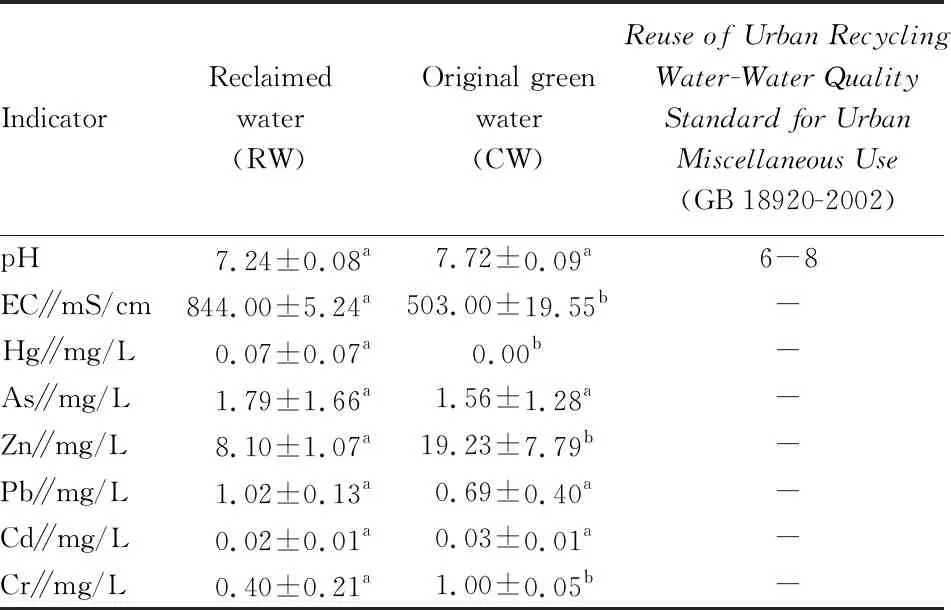
Table 1 Comparison of water quality indicators of reclaimed water and clean water

Table 2 Average daily dose and non-carcinogenic risk assessment of exposed population in reclaimed water irrigation park
The content of heavy metals Hg, As, and Pb in the reclaimed water is higher than that in the original green water, the content of Zn, Cd, and Cr was lower than that in the original green water. The element with the largest difference in content was Zn. The average content of Zn in the original green water reached 19.23 mg/L, and the reclaimed water was only 8.10 mg/L. Followed by Cr and Hg, the difference in the average Cr content between the two was 0.60 mg/L. In several times of sampling, the Hg element in the original green water was not detected. The average content of Hg in the reclaimed water was 0.70 mg/L, and there was no significant difference in the content of As and Cd. The standard error of each indicator of the original green water was relatively large, indicating that the water quality of the original green water was unstable compared with the reclaimed water, the difference of the same water quality indicators was large, and the water quality of the reclaimed water after treatment was relatively stable.
3.2 Analysis of distribution characteristics of heavy metal elements in the reclaimed water-soil system
Comparing the average content of heavy metal elements in the soil of the RW irrigation region, the CW irrigation region, the original park fill (DT), and the soil background value of Ningxia(Fig.1), it can be seen that the highest content of heavy metal elements in the RW area was Cr; the heavy metal element with the highest content in CW and DT regions was Zn, and the heavy metal element with the lowest content in the three regions was Hg. For the soil in the RW region, the content of Hg, Cd and Cr was higher than the background value of the soil. During the process of reclaimed water irrigation, Hg, Cd and Cr were accumulated in the 0-20 cm soil layer; the content of As, Zn, and Pb was lower than the average soil background value, and the Zn content was lower than the average soil background value. These four elements accumulated slowly in the 0-20 cm soil layer or leaching occurred in this soil layer. By comparison, in the CW region, the content of Hg, Zn, and Cd was greater than the average soil background value. The average content of Hg, Zn, and Cd in the 0-20 cm soil layer was 2.38, 1.35, 2.10 times of the soil background value, and the content of As, Pb, and Cr was lower than the soil background value. Through comparing the soil in the DT region without irrigation in the park with the background value of the regional soil, we found that the content of Hg, Zn, and Cd in the DT region was higher than the background value of the soil, while the content of As, Pb, and Cr was lower than the background value. Through comparing the content of heavy metal elements in the RW and CW regions with those in the DT region, we found that the content of Hg, Cd, and Cr in the RW region was greater than those in the DT region, and the content of As, Zn, and Pb was lower than those in the DT region; for the CW region, except for the lower Cr element content, the content of other heavy metals was higher than that of the DT region.
Note: Different letters represent that the two have passed the significance test (P<0.05), and the same letter represents that there is no significant difference between the two.
According to the contamination factor CF of various heavy metal pollutants in the soil, Hg was the highest content heavy metal element in the reclaimed water and the original green water irrigation regions. At this pollution level, plants and soil were moderately polluted. Specifically, the Hg pollution level in the RW region was higher than that in the CW and DT regions, which may be related to the higher average Hg content in the reclaimed water than in the clean water, and also to the higher soil Hg background content. In these three regions, Cd and Zn were the heavy metal elements with higher single pollution level. The region with higher Cd element pollution was RW, followed by CW and DT regions, and the region with higher Zn element pollution was CW, followed by DT and RW regions.
The PL of Hg was relatively large, which is significantly different from the PL of Hg in the CW and DT regions, indicating that the comprehensive pollution level of Hg in reclaimed water irrigation was the largest in this region, followed by Cd and Zn. The PL of Pb and Cr in the RW region was also higher than that in the CW and DT regions. The PL of As in the CW region was higher than that in the RW region. In general, the pollution level of heavy metals in the reclaimed water irrigation region from high to low was Hg>Cd>Pb>Zn>As. The heavy metal elements that need to be paid attention to in this study area are Hg, Cd and Pb (Fig.2).

Fig.2 Comparison of CF and PL of various heavy metal pollutants in soil
3.3 Distribution characteristics of heavy metal elements in plants
The detection of the heavy metal content in the grass samples showed that in the RW region, Zn was the heavy metal element with the highest average content in the grass samples, with an average content of 37.722 mg/kg, followed by Cr, Pb, As, Cd, and Hg, the lowest was Hg (0.060 mg/kg). In the CW region, the content of heavy metals in the grass samples from high to low was Zn>Cr>Pb>As>Cd>Hg. The average content of Zn was 84.464 mg/kg, which is 2.2 times the average content of Zn in the RW region; the average content of Hg was 0.012 mg/kg, and the Hg content of the grass sample in the RW region was 5 times that in the CW region. The standard deviation of the heavy metal elements in the grass samples in the CW region was relatively large, especially Zn and Cr. The content of these two heavy metal elements at each sampling point had a large difference. The standard deviation of the heavy metal elements in the grass samples in the RW region was relatively small, indicating that the sampling values of the heavy metal elements in the RW region were relatively small, and the variability of the content of heavy metal elements in the region was relatively small. There was no significant difference in the Cd content in the grass samples between the two regions, but there were significant differences in the content of Hg, As, Zn, Pb, and Cr (Fig.3).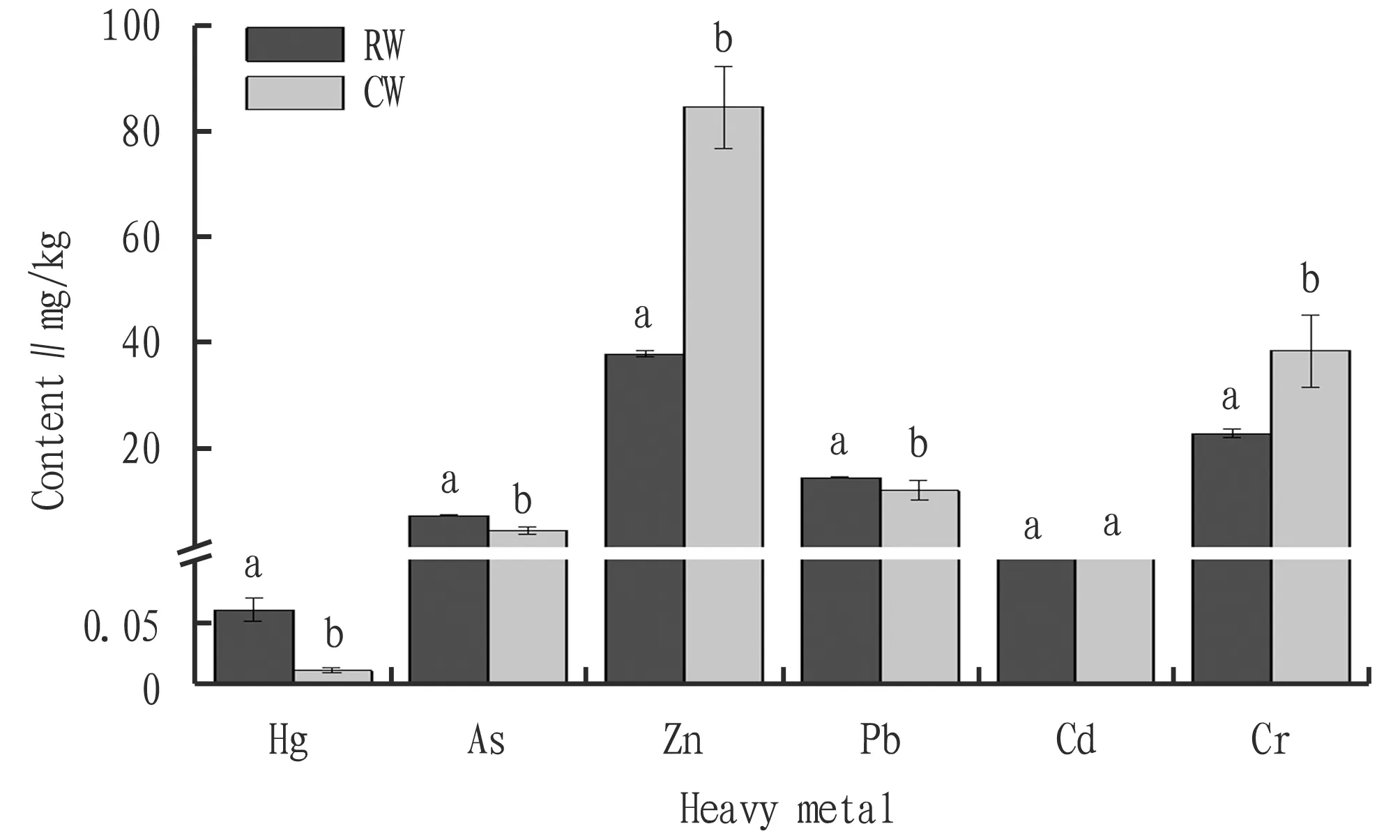
Fig.3 Comparison of the distribution of heavy metal content in plants
The biological absorption coefficient refers to the ratio of the content of heavy metals in plants to the content of heavy metals in soil. It reflects the capacity of plants to absorb heavy metals in soil and is an important indicator of the capacity of heavy metals in soil to migrate into plants. In the RW region, the adsorption capacity of the grass plant for each heavy metal element was Cd (181.73)>As (139.13)>Zn (115.39)>Pb (88.25)>Hg (73.97)>Cr (42.87). Specifically, the absorption coefficient of Cd, As and Zn was greater than 100, the absorption coefficient of Pb, Hg and Cr was smaller than 100. When the absorption coefficient is greater than 100, it means that the heavy metal elements are enriched in the grass and the grass plant has a strong capacity of absorption to the element, otherwise the grass plant has a weak capacity of absorption to Pb, Hg, and Cr.
In the CW region, the adsorption capacity of the same species of grass to heavy metal elements was Cr (195.10)>Cd (161.50)>Zn (103.90)>Pb (50.50)>As (45.20)>Hg (25.00). Except for Cr, the order of the absorption capacity of this plant to heavy metals is the same. In the two regions, there were significant differences in the absorption coefficients of Hg, As, Pb, Cr, and Cd in the soil by grass plants, but there was no significant difference in the absorption coefficients of Zn (Fig.4).
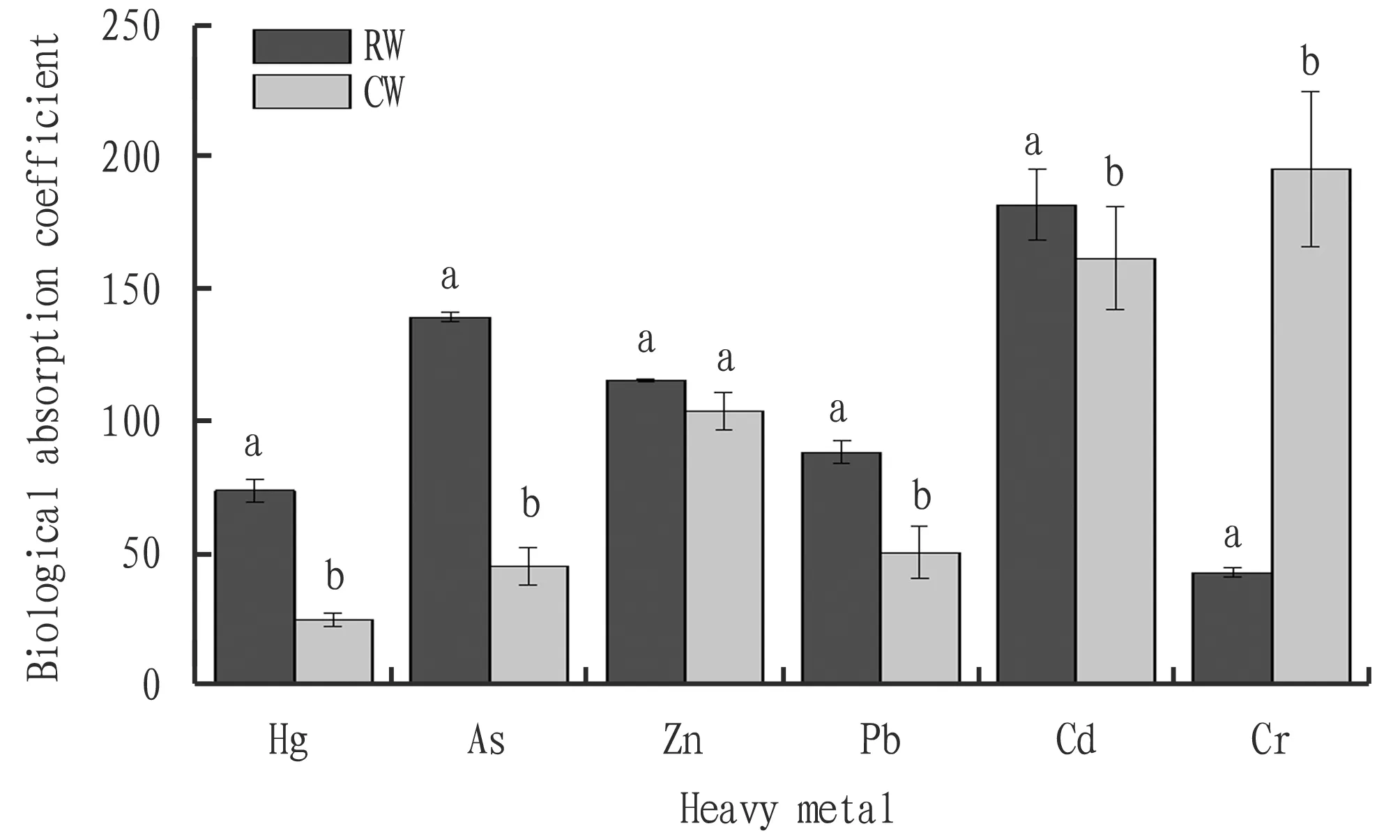
Fig.4 Comparison of biological absorption coefficient A
3.4 Assessment of potential health risks
The potential health analysis method of reclaimed water reuse mainly adopts the "health risk assessment" recommended by USEPA, which is carried out in four steps, namely hazard identification, exposure assessment, and dose-response analysis, and risk characterization. In the process of reuse of reclaimed water in the study area for urban greening, the main exposed people include occupational population and urban residents, occupational population (>18 years old) and urban residents (0-5, 6-17 and>18 years old); the main exposure pathways are the inhalation of reclaimed water through the respiratory route and the infiltration through the skin. In addition, the exposure pathways of the occupational population include the penetration of heavy metals in the soil and plants through the skin. The difference in assessment lies in exposure time, exposure frequency, and dose. At present, USEPA’s Integrated Risk Information System (IRIS) only summarizes the reference doses of Hg and Cr in the respiratory and skin contact exposure pathways. Therefore, we only assessed the potential health risks of Hg and Cr in reclaimed water, soil and plants. TheRfC
of Cr was 8×10mg/m, and LOAEL was 7.14×10mg/m, andRfC
of Hg was 1×10mg/m, and LOAEL was 0.025 mg/m. Due to missing of data, the carcinogenic risk assessment can only evaluate the carcinogenic risk of Cr.For Hg, the highest risk exposure population and exposure pathway is the occupational population through skin contact with reclaimed water infiltration, the lifetime average daily exposure dose is 3.98E-04 mg/(kg·d), and the non-carcinogenic risk value is 1.33E-06. The exposure population and the pathway with the highest potential human health risk of Cr element is the occupational population inhaling reclaimed water through the respiratory pathway, the average daily exposure dose is 1.47E-03 mg/(kg·d), the average non-carcinogenic risk is 1.47E-05, and the average carcinogenic risk is 6.17E-02, the carcinogenic risk is higher than the non-carcinogenic risk. From Table 2, it can be seen that, in general, the average daily exposure dose and exposure risk of various groups of people are occupational groups (>18 years old)>urban residents (>18 years old)>urban residents (0-5 years old)> urban residents (6-17 years old). The exposure time of occupational population is longer, so the potential risk level is higher. For minors, the smaller the age range, the higher the potential health risk level of exposure to the reclaimed water irrigation environment. In terms of the exposure pathway, the non-carcinogenic exposure dose and exposure risk of Hg from high to low are roughly infiltration through the skin route (reclaimed water)>inhalation through the respiratory route (reclaimed water)>penetration through the skin route (soil)>penetration through the skin route (plant). For Cr, it is inhalation through the respiratory route (reclaimed water)>penetration through the skin route (soil)>penetration through the skin route (plants)>penetration through the skin route (reclaimed water). For carcinogenic factor, it is penetration through the skin route (soil)> penetration through the skin route (plants)>penetration inhalation through the respiratory route (reclaimed water)>penetration through the skin route (reclaimed water).
4 Discussion
The content of Pb, Cd, and Cr in the reclaimed water irrigation region is higher than the unirrigated DT region of the park, the clean water irrigation region, and the soil background value of Ningxia. Except for Cr, the content of Hg, As, Zn, Pb, and Cd in the clean water irrigation region is higher than that in the DT region, and the content of Hg, Zn, and Cd is higher than the soil background value of Ningxia. The Cr content exceeded the risk intervention values of the first type of land in theSoil
Environmental
Quality
—Risk
Control
Standard
for
Soil
Contamination
of
Development
Land
(GB 36600-2018), and the excess content is 22.889 mg/kg. The content of heavy metal elements in the remaining regions did not exceed the screening value and risk intervention value specified in the national standard, indicating that this region roughly meets the requirements for the soil quality of park green land. Combined with CF and PL of soil heavy metals, the soil heavy metals Hg, Pb, Cd, and Zn in this region have a strong ability to accumulate in the 0-20 cm soil layer during the irrigation process, and the pollution level is higher than the soil background value. The sources of heavy metal elements such as Pb, Cd, Hg, Zn, As are mainly affected by human activities, while the Cr content in the soil is mainly affected by the characteristics of the soil-forming parent material. The content of Pb, Cd, Hg, Zn, As,etc.
in the soil is greatly affected by external pollution. The Irrigation water quality is a main exogenous factor for the difference in soil heavy metal content between reclaimed water irrigation region and clean water irrigation region. The Cr content is greatly affected by the characteristics of the soil itself. In summary, the heavy metal pollution that should be focused on in this region is Hg, Pb, Zn, Cd and Cr.The heavy metals in plants are mainly absorbed by plant roots. Some of the heavy metals are stored in the plant roots, and others are transported to the vascular bundles through the roots and migrate to the plant leaves. Since plant roots are the main heavy metal absorption parts, the content of heavy metal elements in the plant is correlated with the content of heavy metal elements in the soil. Correlation analysis of the content of heavy metals in the soil and plants in the RW and CW regions (Table 3-4) shows that in the CW region, the Cr content in the soil and grass has a very significant correlation, and Zn has a significant correlation, and other heavy metals also have a certain correlation; in the RW region, the content of Hg, Pb, Cd, and Cr has a significant correlation, and other heavy metals also have a certain correlation. The enrichment coefficients of the same plant in different regions are different, and the correlation between the heavy metal content in the plant and the heavy metal content in the regional soil is also different. The reason may be related to the heavy metal content in the soil in the region. In this study, the geographical location of the two regions is close, and the variability of soil heavy metal elements is small. The main influencing factor for the difference of soil heavy metal elements in the two regions is the quality of irrigation water. Besides, some studies have found that the increase in the content of heavy metals in grasses will increase the biological absorption coefficient of heavy metal elements, especially for elements such as Zn and Cr. Therefore, for this experiment, the difference of irrigation water quality will cause the difference of heavy metal content in the 0-20 cm layer of the soil, which may affect the heavy metal content and biological absorption coefficient of the same grass in different regions. In addition,F.
arundinacea
has a higher accumulation of heavy metals in the study area. This result is consistent with the results of Zheng Cunzhu. The feature ofF.
arundinacea
accumulation of heavy metals can be applied to remediation of soil heavy metal contamination.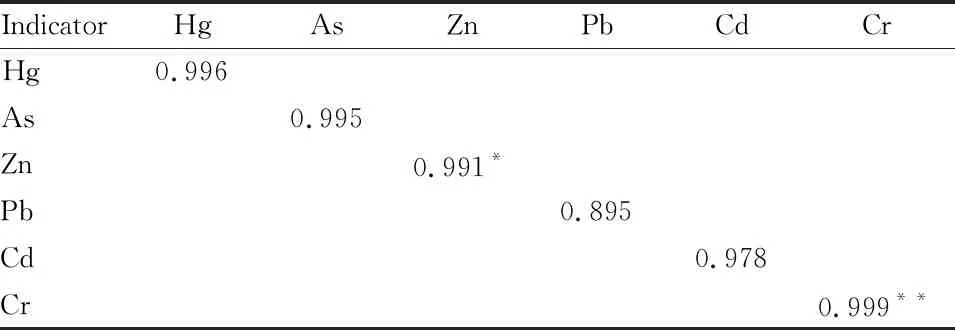
Table 3 Correlation coefficient of heavy metal content in soil and plants in CW region
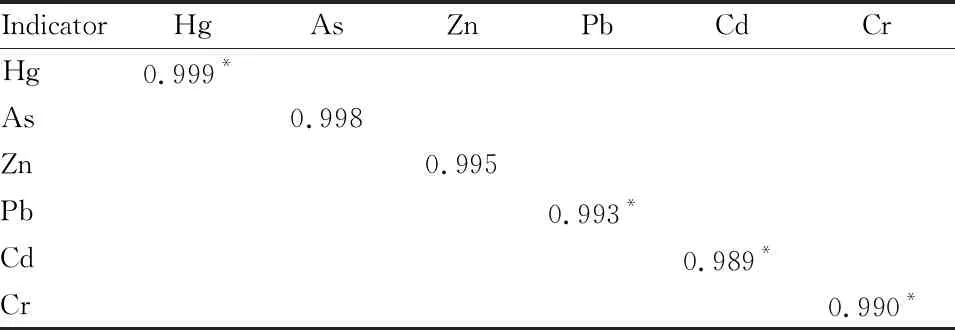
Table 4 Correlation coefficient of heavy metal content in soil and plants in RW region
At present, the most commonly used model for potential human health risk assessment of reclaimed water irrigated green area is the environmental health risk assessment model proposed by USEPA. Using this model, we assessed the potential human health risks of people of different ages and different exposure pathways in the region. The acceptable health risk level proposed by the WHO is 10E-5. The risk level of all people in the reclaimed water region through the inhalation route of Cr content is high, and the risk level of occupational people through skin contact with soil and plants is also high.
5 Conclusions
(i) Compared with the original green water, the Hg, Cd, and Cr pollution of the reclaimed water irrigated green land was higher, the As, Zn, Pb pollution was lower, and the content of Hg and Cd was higher than the environmental background values of soil in Ningxia; the Cr content exceeded the risk intervention values of the first type of land in theSoil
Environmental
Quality
—Risk
Control
Standard
for
Soil
Contamination
of
Development
Land
(GB 36600-2018). However, in general, the comprehensive soil heavy metal pollution index of the reclaimed water irrigation region was lower than that of the clean water irrigation. The reclaimed water irrigation reduces the heavy metal pollution of the green soil to a certain extent.(ii) In the reclaimed water irrigation region, the heavy metal content ofF.
arundinacea
from high to low was Zn, Cr, Pb, As, Cd, Hg, and the order of the biological absorption coefficient was Cd>As>Zn>Pb>Hg>Cr. The content of heavy metals in plants was correlated with the content of heavy metals in soil. For this study, the difference in irrigation water quality will lead to differences in the content of heavy metals and the biological absorption coefficient in plants.(iii) Using the health risk assessment method recommended by USEPA, it is concluded that the reclaimed water has the highest risk of inhalation through the respiratory route, and the risk level of the occupational population through skin contact with soil and plants is also relatively high.
杂志排行
Asian Agricultural Research的其它文章
- Nitrogen Metabolism and Curing Characteristics of Flue-cured Tobacco Variety NC71
- Study on Phthalate Esters Pollution in the Soil of Facility Vegetable Base in Yangling District of Xianyang City
- Distribution of Land Increment Income from Marketing Rural Collective Land for Development Purposes: A Case Study of Changyuan City
- Research on the Balance of Urban Benchmark Land Price in Henan Province: A Case Study of Commercial Land
- Enlightenment of EU New Common Agricultural Policy on Protection and Sustainable Utilization of Cultivated Land in China
- Effects of Nitrogen Forms on the Growth and Development of Trees
